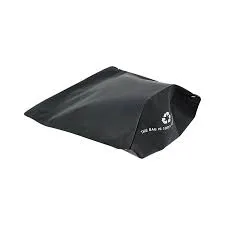- Afrikaans
- Albanian
- Amharic
- Arabic
- Armenian
- Azerbaijani
- Basque
- Belarusian
- Bengali
- Bosnian
- Bulgarian
- Catalan
- Cebuano
- chinese_simplified
- chinese_traditional
- Corsican
- Croatian
- Czech
- Danish
- Dutch
- English
- Esperanto
- Estonian
- Finnish
- French
- Frisian
- Galician
- Georgian
- German
- Greek
- Gujarati
- haitian_creole
- hausa
- hawaiian
- Hebrew
- Hindi
- Miao
- Hungarian
- Icelandic
- igbo
- Indonesian
- irish
- Italian
- Japanese
- Javanese
- Kannada
- kazakh
- Khmer
- Rwandese
- Korean
- Kurdish
- Kyrgyz
- Lao
- Latin
- Latvian
- Lithuanian
- Luxembourgish
- Macedonian
- Malgashi
- Malay
- Malayalam
- Maltese
- Maori
- Marathi
- Mongolian
- Myanmar
- Nepali
- Norwegian
- Norwegian
- Occitan
- Pashto
- Persian
- Polish
- Portuguese
- Punjabi
- Romanian
- Russian
- Samoan
- scottish-gaelic
- Serbian
- Sesotho
- Shona
- Sindhi
- Sinhala
- Slovak
- Slovenian
- Somali
- Spanish
- Sundanese
- Swahili
- Swedish
- Tagalog
- Tajik
- Tamil
- Tatar
- Telugu
- Thai
- Turkish
- Turkmen
- Ukrainian
- Urdu
- Uighur
- Uzbek
- Vietnamese
- Welsh
- Bantu
- Yiddish
- Yoruba
- Zulu
plastic vacuum
The Role of Plastic Vacuum Technology in Modern Manufacturing
In today's rapidly evolving industrial landscape, the intersection of plastic and vacuum technology has opened new avenues for innovation and efficiency. As manufacturers strive to meet the diverse needs of consumers, the utilization of plastic vacuum techniques has become increasingly significant. This article explores the advantages, applications, and challenges of plastic vacuum technology in modern manufacturing.
Understanding Plastic Vacuum Technology
Plastic vacuum technology refers to processes that involve using a vacuum environment to shape, mold, or handle plastic materials. This technique is pivotal in various applications, from packaging to component manufacturing. By removing air from the environment, manufacturers can achieve better material conformity, reduce defects, and enhance the overall quality of the final product.
One of the primary processes in this domain is vacuum forming, where heated plastic sheets are shaped over a mold using suction. This method is popular due to its cost-effectiveness and versatility, enabling the production of complex shapes with relative ease. Additionally, vacuum sealing is another critical application, particularly in food packaging, where it extends the shelf life of products by removing air.
Advantages of Plastic Vacuum Technology
The benefits of incorporating plastic vacuum technology into manufacturing processes are manifold
1. Quality and Precision The vacuum environment minimizes the presence of air, which can introduce imperfections during the molding process. This leads to higher precision and a superior quality of the final product, making plastic vacuum techniques desirable in industries where quality is paramount.
2. Material Efficiency By using vacuum techniques, manufacturers can optimize material usage, reducing wastage. This efficiency not only lowers costs but also aligns with sustainability goals as companies strive to minimize their environmental footprint.
3. Cost-Effectiveness Compared to other molding techniques, vacuum forming and injection molding processes that incorporate vacuum environments can be more affordable, especially for small to medium-sized production runs. The ability to create custom molds relatively quickly contributes to reduced lead times and better responsiveness to market demands.
plastic vacuum

4. Flexibility and Versatility Plastic vacuum technology is applicable across a wide range of industries including automotive, aerospace, medical, and consumer goods. This versatility allows manufacturers to innovate continuously and adapt to ever-changing market trends.
Applications in Various Industries
The applications of plastic vacuum technology span multiple sectors. In the automotive industry, vacuum-formed plastic parts are used for dashboards, panels, and even components that require lightweight but sturdy materials. In the medical field, vacuum-sealed packaging ensures sterilization and safety for medical devices and pharmaceuticals.
Furthermore, the food industry heavily relies on vacuum packaging to double the shelf life of perishable goods, preserving freshness and preventing spoilage. The reduction of oxygen exposure in vacuum-sealed packaging significantly slows down the deterioration process, benefiting both manufacturers and consumers.
Challenges and Considerations
Despite its many advantages, plastic vacuum technology is not without challenges. One of the primary concerns is the environmental impact of plastics. While vacuum technology aids in material efficiency, the reliance on plastic materials raises sustainability issues. Manufacturers must consider alternative materials and recycling processes to align with global sustainability goals.
Moreover, the initial setup costs for vacuum forming equipment can be significant, which may deter small businesses from adopting this technology. There is also the need for skilled labor to operate and maintain sophisticated vacuum forming machines, adding to operational complexities.
Conclusion
Plastic vacuum technology plays a vital role in modern manufacturing, offering numerous benefits ranging from improved quality to versatility in applications. As industries move towards more sustainable practices, integrating eco-friendly materials and processes will be essential for the continued advancement of plastic vacuum technology. Embracing these changes will not only optimize production but also cater to the growing consumer demand for responsible manufacturing practices. As we look to the future, the evolution of plastic vacuum technology promises to be an integral part of innovations across various sectors, driving efficiency and sustainability hand-in-hand.













